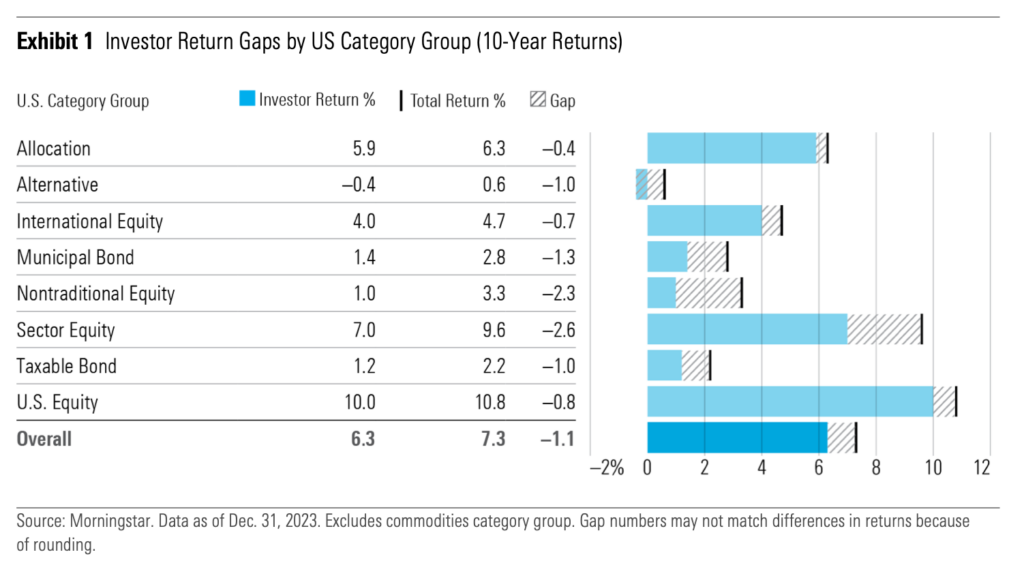Improving Your Investment Returns
Vanguard’s Advisor’s Alpha (VAA) framework quantifies the benefit financial advisors can provide clients by following certain wealth management best practices. There’s admittedly some art to their analysis that concludes that advisors can add up to 3% or more in net returns. However, a separate Morningstar study supports the math, and more importantly, provides guidance for all investors to improve their investment returns.
Behavioral Coaching
One VAA practice is behavioral coaching, or keeping investors focused on the long-term to avoid investing mistakes that can lead them to earn less than their investments. You can measure this gap by comparing an investment’s time-weighted return (TWR) to its internal rate of return (IRR).
“A fund’s TWR represents the performance of its assets under management for a defined period and is generally the industry standard for reporting returns. The IRR approximates the return earned by the average dollar invested in the fund over the same period”
Putting a value on your value: Quantifying Vanguard Advisor’s Alpha
There should be some gap between the two as people add money over time to a rising market, but larger gaps indicate poor investment timing decisions, such as chasing hot funds or selling out at the wrong time due to impatience or nervousness.
Morningstar
Morningstar calls this gap the investor return gap. Its 2024 Mind the Gap report showed that “the average dollar invested in US mutual funds and exchange-traded fund earned 6.3% per year over the 10 years ended December 31, 2023. That is approximately 1.1% per year less than the average fund’s total return over the same period…The 1.1% ‘gap’ is explained by the timing of investors’ purchases and sales of funds shares.”
A gap existed in all ten categories analyzed.

It also existed in all ten years studied with the Covid bear market year being the worst.
It also existed with passive and active strategies.
Knowing all this, how can you improve your investment returns?
- Limit exotic investments: Alternatives, Nontraditional equity, and sector equity had large investor gaps. Balanced funds and US and International Stock funds had smaller ones.
- Beware volatile investments: “The more volatile a fund’s returns versus peers, the larger the gaps tended to be; the average dollar invested in the most volatile sector equity funds lagged the buy-and-hold return by over 7 percentage points per year.”
- Don’t market time: It can’t be done, and the paper shows that in aggregate investors lost money trying.
- Ask for help: Bringing it back to how this post started, a financial advisor coaching you through market volatility, keeping you focused on the long-term, and helping you avoid investment mistakes could reduce the investor return gap.
